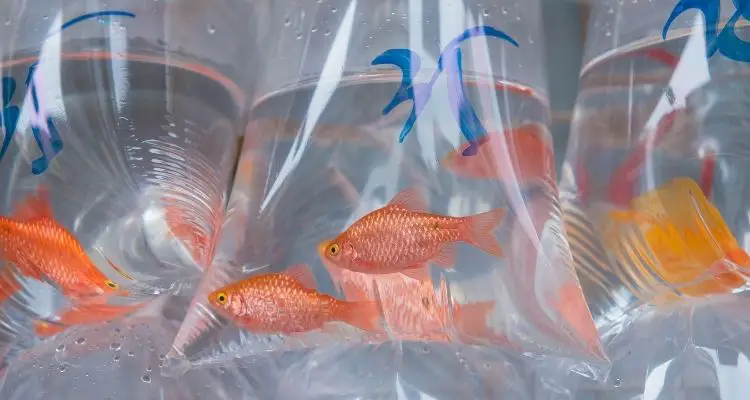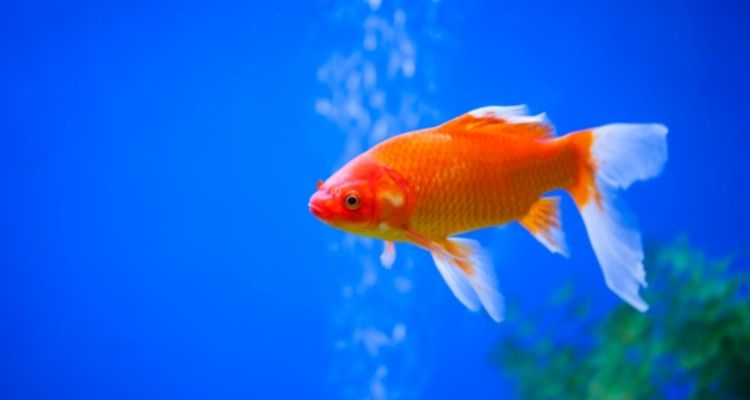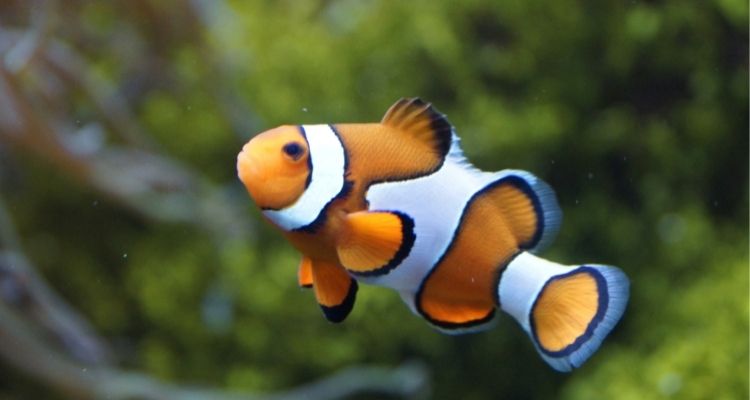
When you’re adding new fish to an aquarium, there are many things to consider. What type of water do they like? Do they need any special care or diet? Is the tank big enough for them and everything else that is already living in it?
However, one thing you might not have thought about when deciding whether or not this is a good idea is how your other fish will react. Will the old ones get territorial and chase the newcomers away? Or will they welcome them with open arms and become best friends forever?
This article will show you how to introduce your new fish to the older ones. Let’s go!
New fish, old fish
We all have our steps of adding fish into the tank. However, do we account for the relationship between the old and new fish in the tank?
Well, there is no specific protocol for introducing new fish to the old guards of the aquarium. One must ensure that would-be tank mates are compatible and capable of sharing the same living space. If this is done and checked, you can go ahead and acclimate the fish into the tank with little to no worries.
Fish, in this department, are unlike dogs. The latter have ways of introduction that can foster a good relationship between them. After which, the dogs(from various breeds) can decide to like each other…or not. The former either tolerate each other, or they don’t. It’s that simple!
All you have to do is make sure that new fish and old fish are compatible. Wait a minute, what does fish compatibility mean?

What is fish compatibility?
Most people think of fish compatibility and straight-up think of fish getting along. While that may be true to some degree, the term encompasses a lot more than that.
For instance, freshwater and salt fish have different ideal conditions. You can have an acidic-water-oriented fish in a tank full of fish used in alkaline environments. The fish may survive, but you will be condemning it to a stressful and short life. Some fish can’t exist with other types of fish even if they like the same environmental conditions. You will have fights everywhere in the tank, and your fish die or eat each other daily if you don’t observe compatibility rules.
My definition of fish compatibility is thus not only fish tolerating each other. It is also about the safety of the fish and my peace of mind!
The responsibility of getting compatible tankmates for aquarium fish is obviously on the aquarist. It would be best to do some research to house different fish species in the same tank. You can also refer to compatibility charts in online spaces.
Below are some tips to get you going:
- More fish means more space. You can not add a new member into an area that another recognized as its own. The existing fish will not be too happy to share. Cramped-up fish feel suffocated, and resulting stress may have them lash out in different ways. There is nothing like too big an aquarium for them; their natural habitat was more extensive than what you think of. Aim to give every fish some space and room.
- Sufficient food is crucial to having peace in communal tanks. The food should be enough to keep them going, though. Avoid overfeeding or underfeeding at all costs.
- It would be best if you did not house predator fish with fish that can fit in their mouth. Any fish seen as prey in their eyes will be as good as gone the next time you come around. In addition, fish with aggressive tendencies should be house individually or with tankmates that occupy different spaces in the aquarium. That is to say, an aggressive fish that stays primarily in upper tank levels can live comfortably with compatible bottom dwellers. You will prevent unnecessary fights if you use this analogy.
- Decorations and plants are safe havens for fish that don’t like social interactions. A place they can hide out or cal their own is handy to such fish. Generally, hiding spots are tensions cooling avenues of your aquarium.
- Consider the dominance or territorial hierarchies that may exist in the tank. Smaller or submissive fish usually are harassed and bullied in such environments. If you must add a fish into an existing pecking order, buy one that is as big as the largest fish in your tank.
When talking about introducing new arrivals to the fish in your tank, we also have to keep in mind the introduction of fish into the water tank! Acclimating fish to the condition in aquariums is very important. If you don’t know how to acclimate fish, I got you covered!
Acclimating Fish
It would be best if you acclimated fish before introducing them to your tank. Properly acclimating your new arrival could mean the difference between a healthy, happy fish that has found a new home or one that is doomed to perish after several hours in your tank.

Why Do We Have To Acclimate Fish?
Put, we have to acclimate fish because the water parameters in the shipping bag and the water parameters in our tank are usually very different.
Primarily, we have to acclimate fish to differences in pH and temperature so that they can make a smooth transition from the shipping bag to our tank.
If the fish has spent an hour or so in the shipping bag on the journey from the LFS to your home, the pH of the water would have gradually dropped.
Marine fish drink copious amounts of water from their surroundings and excrete highly concentrated urine. This increases the acidity of the water in the shipping bag, lowering the pH considerably.
If a fish is introduced suddenly to water with a higher pH or lower pH without proper acclimation, osmotic shock occurs.
Osmotic shock, depending on the severity, can lead to a stunned, weakened fish. In some of the more delicate species, it may even result in death after a few hours.
How To Acclimate Fish
The procedure used to acclimate fish is very simple and takes about 45 minutes to an hour. We are slowly introducing water from our tank and gradually allowing it to mix with the water in the shipping bag that the fish is in.
Once enough time has passed, and we have at least doubled the amount of water in the shipping bag, the fish can be released into the tank.

How To Acclimate Fish | Basic Procedure
Once you open the top of the shipping bag, place the entire bag in a plastic container narrow enough to keep it standing upright. Ensure that the bag cannot collapse on itself and that the fish is not caught in one of the corners of the bag as it sits in the container.
With a water jug, scoop out water from the tank that the fish will be placed in. Carefully dribble about 30mls of tank water into the shipping bag. Slowly pour the water in along the sidewall of the bag, so the fish is not startled. Wait for 10 minutes before slowly pouring in another 30mls of tank water.
Pour in 30mls of tank water at 10-minute intervals until the amount of water in the shipping bag has at least doubled. Be patient and take however much time that requires.
Some LFS’s will put too much water in the shipping bag, in which case you will have to discard a third or even half of the water first before you begin acclimation. As long as the fish is comfortably submerged, with at least 3 inches of water above its dorsal fin, it will be fine, and you can start the acclimation procedure.
For bigger fish in a larger volume of shipping water, you can increase the amount of water you pour in each time but keep the 10-minute interval the same.
After the hour has elapsed and the volume of water in the shipping bag has at least doubled, gently pour the water and the fish into a perforated plastic colander and release the fish into the quarantine tank. We want to discard all of the shipping water that the fish was in.
Most aquarists use a net to remove the fish from the shipping water. Nets can snag fins, mouths, and gills, which is why I prefer a colander or strainer. Ensure that the colander has no sharp edges in its perforations that might hurt the fish and dedicate a new one only for this purpose. It is probably not a good idea to use the same strainer for salads or that family pasta.
How To Acclimate Fish | Drip Acclimation
The best and most gradual way to acclimate fish is by drip acclimation. With drip acclimation, water from the destination tank is siphoned and dripped via airline tubing into the shipping bag. The drip rate is controlled by a simple plastic valve that should be adjusted to, say, one or two drops of water per second.
Drip acclimation ensures that the water from the destination tank enters the shipping bag at a very gradual rate, and the fish is allowed to acclimate slowly. With drip acclimation, I prefer to let the process carry on for a full hour or 90 minutes.
You should make sure that the drip valve is doing its job. We do not want a sudden siphon of water filling the bag, which would defeat the purpose of gradual acclimation!

Always Acclimate Fish Properly!
Some LFS’s tell the beginner that all they need to do to acclimate fish is to float the shipping bag in the tank before releasing the fish. This is an inadequate acclimation procedure!
While this ‘method’ equalizes the temperature of the water in the bag to the water in the tank, this does NOT count as proper marine fish acclimation since the all-important issue of pH difference and osmotic shock is not addressed by simply floating the bag.
Floating the bag is useful only as a pre-acclimation procedure, especially if the temperature difference between the water in the shipping bag and the water in your tank are several degrees apart.
Final thoughts
If your new fish is compatible with the old ones, you can go ahead and place it into the fish tank. There may be some aggression, but it will be peaceful once the fish establish their territories.
Additionally, you should also ensure that you properly “introduce” fish to the environmental parameters in your tank. I hope the short acclimation guide here will put you in a better place to do that!
I would love to hear from you. Feel free to share your thoughts in the comment section below!